Botanical name : Cucumis sativus
Common name : Cucumber, gherkin, slicing cucumber, pickling cucumber, Lebanese cucumber, burpless cucumber.
Intermediate difficulty for seed saving
Lifecycle: Annual
Pollination: Cross-pollinated by insect
Mating system: Monoecious. Separate flowers produce and accept pollen. Both types of flowers occur on the one plant.
Suggested spacing: Same as for eating production
Seed specific requirements: Fruit must be left until fully mature which is well past the usual eating stage
Isolation distance: 250 m
Population size: 5 to 10 plants
Seed maturity: Fruits can be harvested for seed when they are fully mature. Skin colour has changed to have a brown or yellow cast to it. Fruit is larger than usually harvested
Processing method: Ferment to remove gel sac around seed
Expected seed viability: 5 years
Images
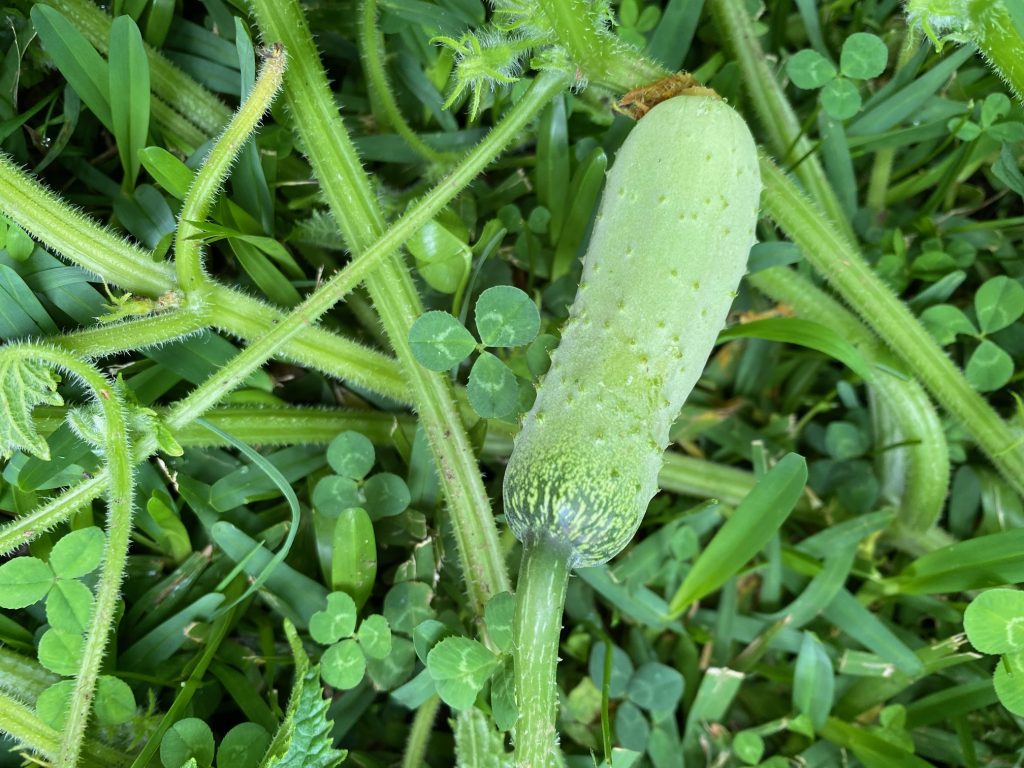
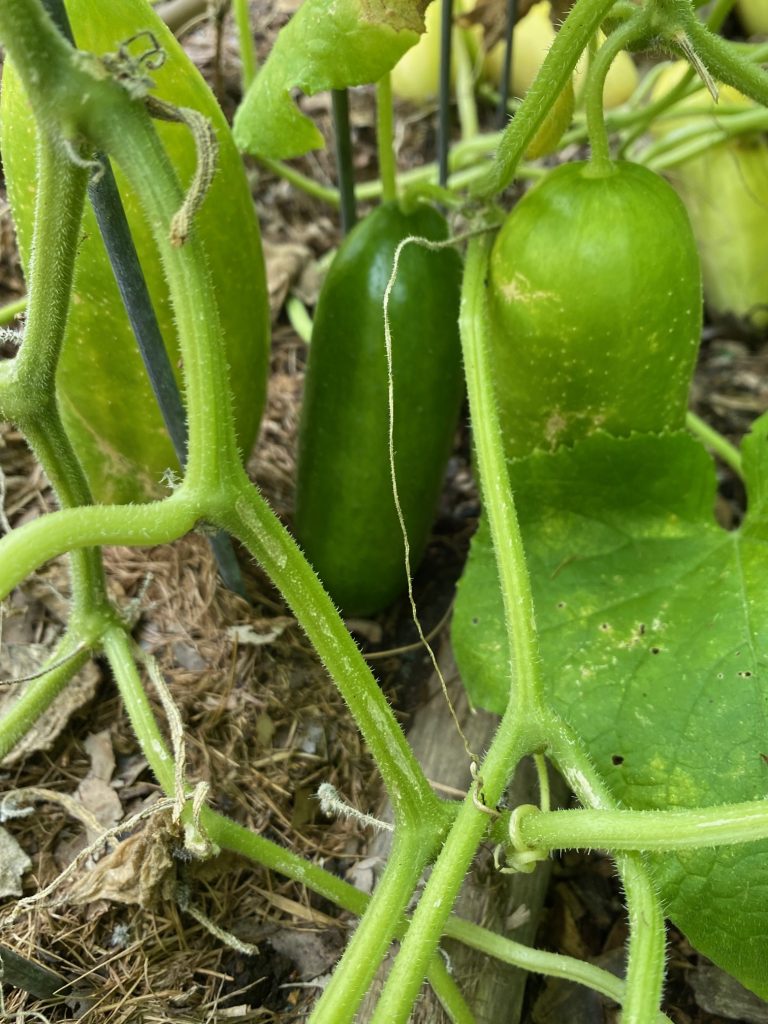
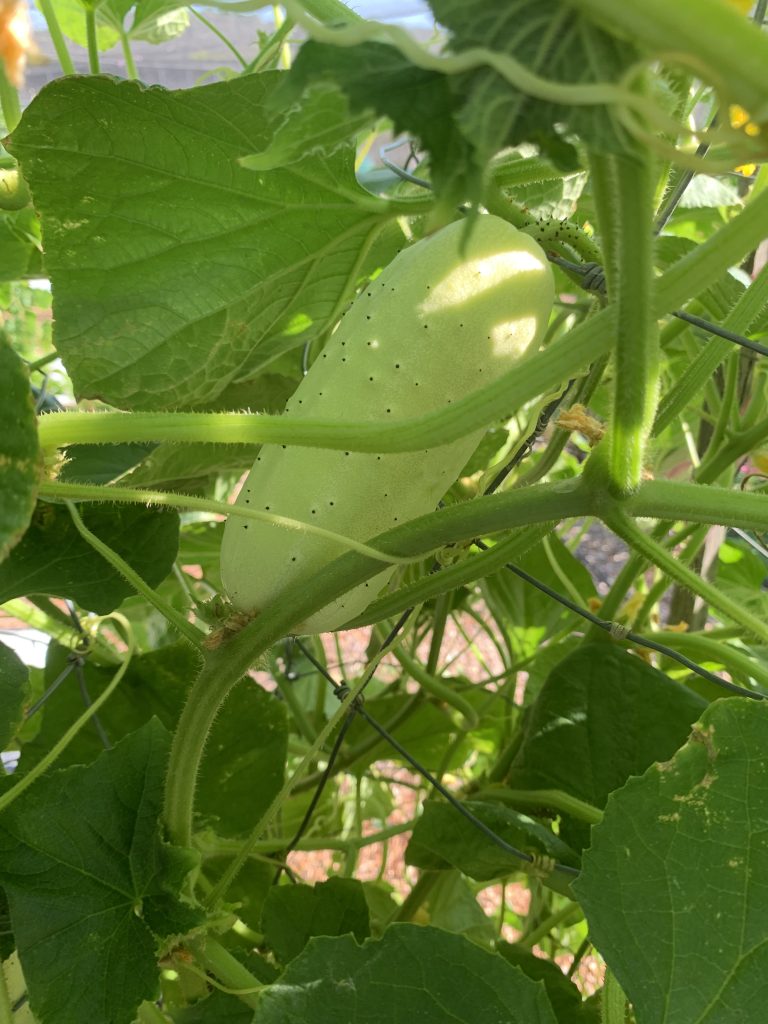
Growing for seed
Cucumbers are warm weather annuals. When growing for seed the fruit are left on the vines for much longer than when they are being harvested for eating. Keeping the fruit off the ground can help to ensure it does not rot before it is fully mature.
Early fruit will contain the best seed. If it is intended to also eat some of the crop from the plants, it is helpful to identify the fruits that will be left for seed and mark them early in the season so they are not accidently picked for the kitchen. Note that leaving fruits on the plant may slow down the formation of new fruits as the plant puts its energy into maturing the seed first.
Selection
Seed should be harvested from healthy plants that are growing vigorously with fruit that has the desired traits.
Harvest
Cucumbers are harvested for seed much later than when they are harvested for eating. These images show the varieties at their typical eating stage when small and then the larger, mature yellow/brown skinned forms that are mature for seed harvest.
Holding the fruit for several weeks at room temperature after harvest can also help to ensure the seeds are fully ripe. Do not hold fruit that has been damaged and may begin to rot or go mouldy. These fruit, if they otherwise meet the selection criteria, should be processed promptly.
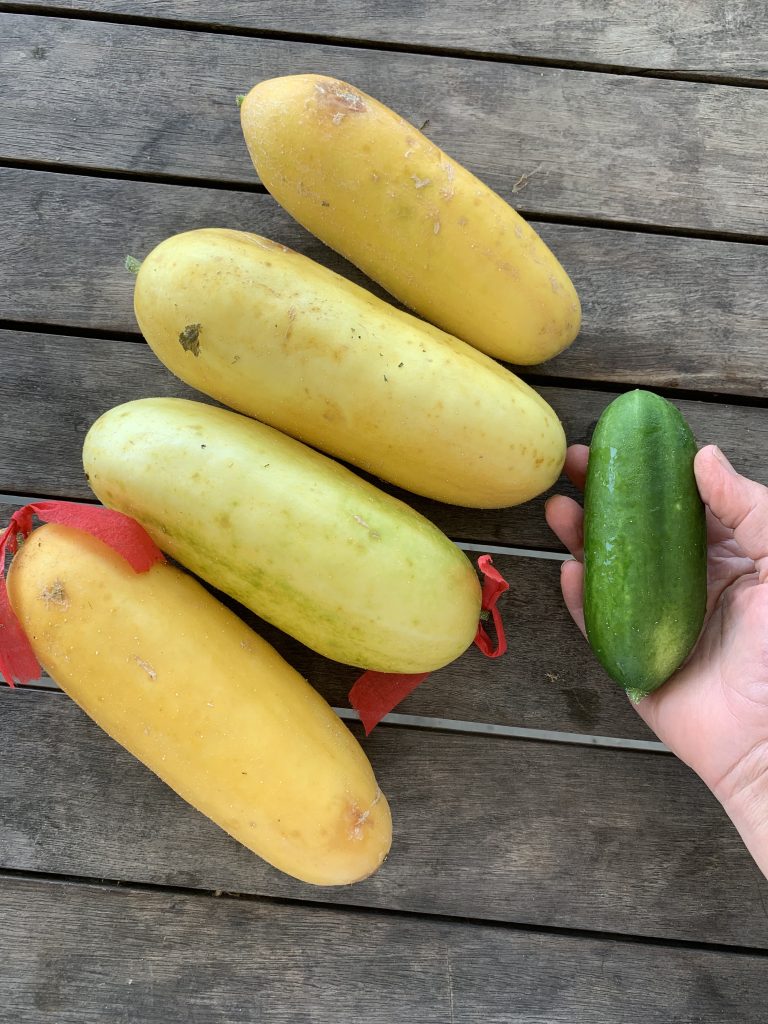
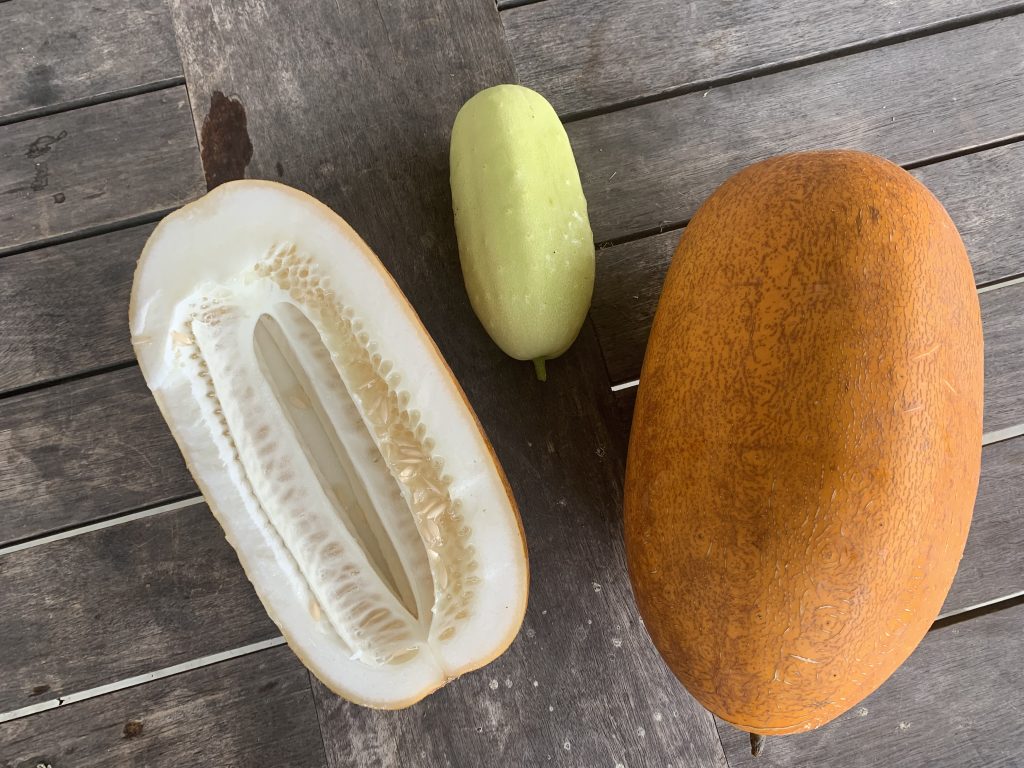
Processing
Cucumber seeds are encased in a gel sac. They are processed by scraping the seeds and their encasing material into a container. The seeds, gel and pith are left to ferment for several days. It is useful to ferment in a transparent container such as a glass jar or jug. When the seeds can be seen to be falling to the bottom of the container when the contents are stirred then the fermentation has done its job.
Viable seeds can be separated from non-viable seeds and other material by filling the container with water, allowing the seeds to sink and then carefully pouring off all the floating material. Repeating this process a few times will result in clean seed that can be tipped into a sieve and then spread to dry on a screen or cloth.
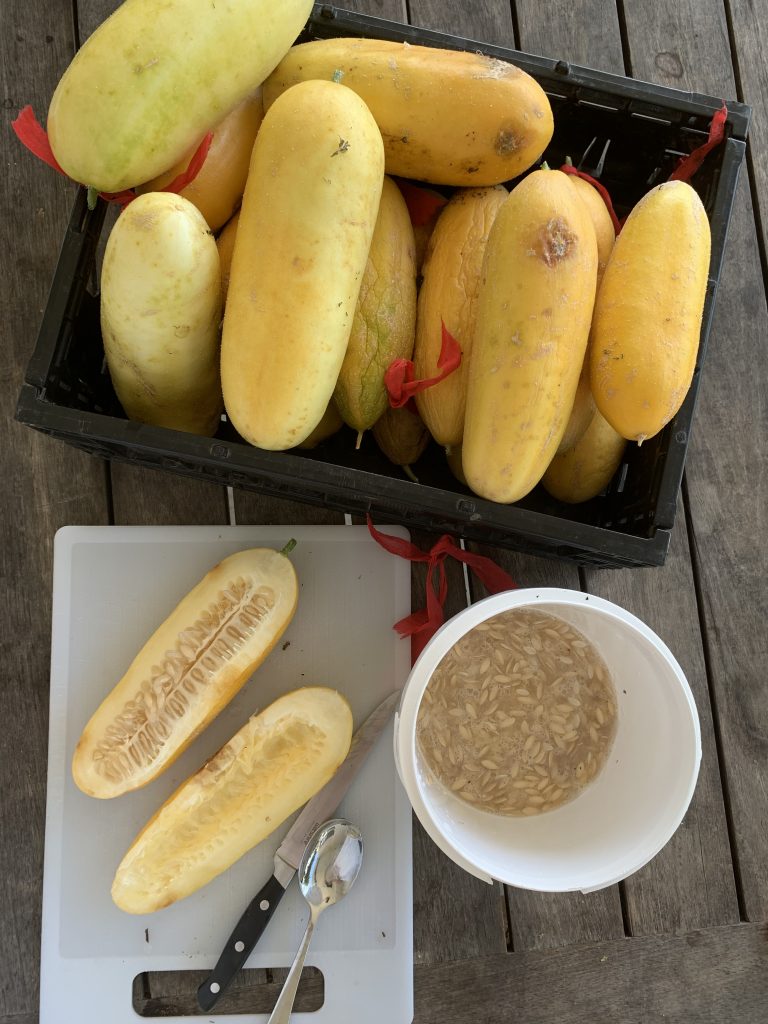
Contributors
Liz Worth, Nellie Pryke
